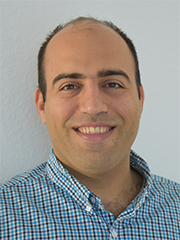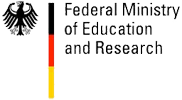| Foto | First Name | Last Name | Position |
|---|---|---|---|
 |
Mykhaylo | Andriluka | People Detection and Tracking |
 |
Roland | Angst | Vision, Geometry, and Computational Perception |
 |
Tamay | Aykut | |
 |
Vahid | Babaei | |
 |
Pierpaolo | Baccichet | Distributed Media Systems |
 |
Volker | Blanz | Learning-Based Modeling of Objects |
 |
Volker | Blanz | Learning-Based Modeling of Objects |
 |
Martin | Bokeloh | Inverse Procedural Modeling |
 |
Adrian | Butscher | Geometry Processing and Discrete Differential Geometry |
 |
Renjie | Chen | Images and Geometry |
Researcher
 |
Dr. Michael Zollhöfer |
Visual Computing, Deep Learning and Optimization
| Name of Research Group: | Visual Computing, Deep Learning and Optimization |
| Homepage Research Group: | web.stanford.edu/~zollhoef |
| Personal Homepage: | zollhoefer.com |
| Mentor Saarbrücken: | Hans-Peter Seidel |
| Mentor Stanford: | Pat Hanrahan |
| Research Mission: | The primary focus of my research is to teach computers to reconstruct and analyze our world at frame rate based on visual input. The extracted knowledge is the foundation for a broad range of applications not only in visual effects, computer animation, autonomous driving and man-machine interaction, but is also essential in other related fields such as medicine and biomechanics. Especially, with the increasing popularity of virtual, augmented and mixed reality, there comes a rising demand for real-time low latency solutions to the underlying core problems. My research tackles these challenges based on novel mathematical models and algorithms that enable computers to first reconstruct and subsequently analyze our world. The main focus is on fast and robust algorithms that approach the underlying reconstruction and machine learning problems for static as well as dynamic scenes. To this end, I develop key technology to invert the image formation models of computer graphics based on data-parallel optimization and state-of-the-art deep learning techniques. The extraction of 3D and 4D information from visual data is highly challenging and under-constraint, since image formation convolves multiple physical dimensions into flat color measurements. 3D and 4D reconstruction at real-time rates poses additional challenges, since it involves the solution of unique challenges at the intersection of multiple important research fields, namely computer graphics, computer vision, machine learning, optimization, and high-performance computing. However, a solution to these problems provides strong cues for the extraction of higher-order semantic knowledge. It is incredibly important to solve the underlying core problems, since this will have high impact in multiple important research fields and provide key technological insights that have the potential to transform the visual computing industry. In summer 2019 Michael Zollhöfer joined Facebook. |
Researcher
- Name of Researcher
- Adrian Butscher
- Homepage of Research Group
- First Name
- Adrian
- Last Name
- Butscher
- Foto

- Phone
- Position
- Geometry Processing and Discrete Differential Geometry
- Mentor in Saarbruecken
- Hans-Peter Seidel
- Mentor in Stanford
- Leonidas Guibas
- Categories
- Former Groups
- Research Mission
- Many forms of data are geometric in nature - from discrete representations of 3D objects (e.g. range scan data from real-world objects) to high-dimensional data exhibiting lower-dimensional manifold structure (e.g. dense measurements of a system that evolves by simpler physical laws). Geometry processing concerns itself with the manipulation, analysis and simulation of such data. Differential geometry provides a powerful language for the analysis of the intrinsic geometric properties of shapes and their inter-relationships. Many of the most successful geometry processing algorithms can be formulated as solutions of discretized PDEs that can be understood via the body of knowledge provided by differential geometry concerning the properties (e.g. convergence, robustness, etc.) of the continuous limits of these equations. In particular, many triangle mesh operations (e.g. deformation, editing, re-meshing, parametrization) can be seen as discrete variational problems in which the desired outcome optimizes an energy function subject to user constraints. Here, partial differential operators arise as the gradients of the energy functions. I am interested in understanding and developing algorithms for processing geometric data based on variational principles and other applications of differential geometry and partial differential equations. In 2013 Adrian Butscher joined Autodesk Research, Toronto.
- mission_rtf
- Name of Research Group
- Geometry Processing and Discrete Differential Geometry
Personal Info
- Photo

- Website, Blog or Social Media Link



